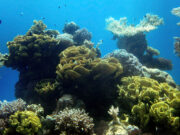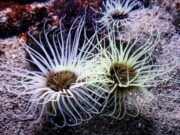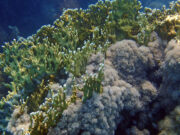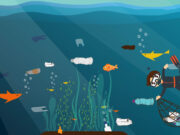science
Home science
"Nearly 50% of the scientific publications for the fishes studied only concerned a subset of 1% of the species"
The most threatened reef fishes are the most overlooked by scientists and the general public. That...
Giant sea fans are common and conspicuous in tropical seas, and a favourite with underwater photographers who often pose their buddy behind one.
Diver behind giant sea fan. Photo credit: Garry Frazer.
Pinna nobilis, the giant bivalve, is endangered. Although in some places it has historically been abundant, there has been a lack of up-to-date information about its exact distribution. SCUBA divers therefore went looking for the giant mussel...
Warming seas around the world are threatening corals. But scientists from the Hebrew University of Jerusalem and Bar-Ilan University have noticed that corals in Eilat, at the North of the Red Sea, remain healthy even when exposed to higher...
At 9 foot long, not including the tail, tiger shark (Galeocerdo cuvier) Harry Lindo is not exactly on the small side. It’s not Harry’s size that is exciting scientists and shark enthusiasts, nor a photograph taken in 2009 by Ian...
More sharks live around the Galapagos Darwin and Wolf Islands than anywhere else on the planet
Researchers at Hawai'i Institute of Marine Biology (HIMB) have shown that, contrary to most projections, coral reefs are not inevitably doomed, but have the potential to persist and adapt over time, if carbon emissions are curbed...
Scientists have used satellite tracking and a crime-scene technique to discover an important feeding ground for green turtles in the Mediterranean.
University of Exeter researchers measured "stable isotope ratios" - a chemical signature also...
A simple bottle of seawater shows the identifiable tracks of numerous species of shark - no need for baiting, hooking, filming or tagging.
These slow moving fish are not at all intimidated by divers, and often come to greet you on your dive - where to see them and why some of them follow turtles





























